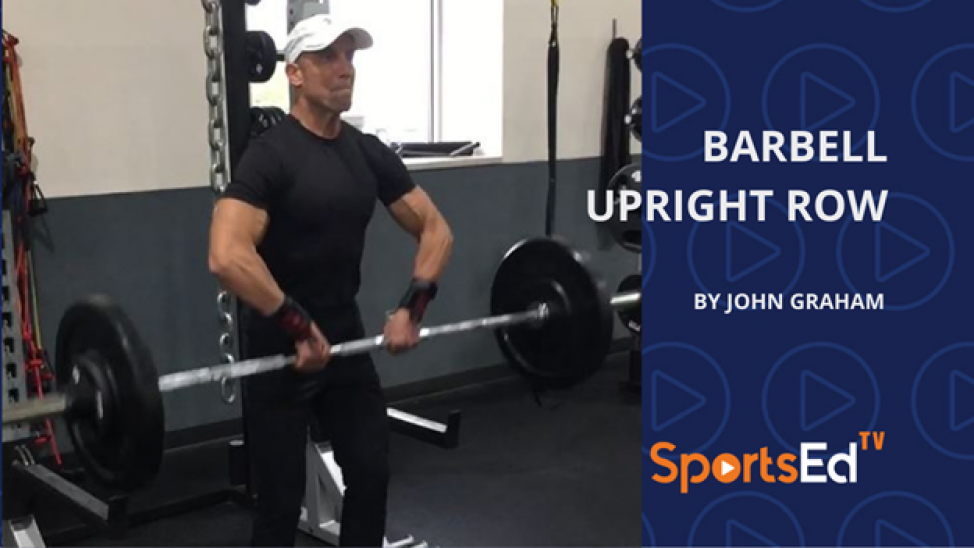Weightlifting, Strength And Conditioning
Welcome and thanks for visiting...

Reps vs. Clusters: What? When? Why?
During his time as USA Weightlifting’s National Coaching Coordinator, Carl Miller introduced the term and concept of barbell cluster training. Simply stated, this is an adaptation of interval training common to runners, swimmers, and other endurance athletes. Although not well referenced at the time, cluster training now appears throughout scientific literature. However, coaches and athletes often fail to differentiate between clusters and traditional sets of repetitions. Coach (and USAW National Champion) TJ Greenstone provides a solid explanation of the subtle differences between the two forms of training.
Keeping track of personal records, both in single and multiple repetition ranges, is crucial to continued improvement. Many times I see lifters posting about their personal bests in varying rep ranges. He or she lifted X amount of weight for three repetitions. They’ve never lifted so much weight for three repetitions, so they must be getting better, right?
But are they really improving?
Coach (to lifter): If it was three repetitions, why did it take me 47 seconds to watch it on the video? Why did you exit stage left, then return to the barbell between each rep?
Lifter: Well, I needed to hydrate between the first two reps! Sometimes my belt loosens right before the last repetition, so I have to stop and retighten it. And sometimes the discs move out after dropping the previous rep, so I need to tighten up the bar.
Yes, I’m being facetious, but I see this so many times. People call it a set of three when it truly is not a set of three. It’s a cluster!
As reported by Stone, et al (2007) and Siff (2003), cluster training has many advantages. I use them and program them frequently, but they aren’t the same, and the training effect is not the same, as a set of three continuous reps. Both clusters and sets should be used, but at different times and for different purposes.
Let’s look at the differences so we’re all on the same page.
Terminology
Repetitions (Traditional Set)
- Definition: Performing an exercise for multiple repetitions in succession with no or minimal (enough time to quickly reset) rest time.
- Example: A set of three snatches from the floor involves either holding onto the barbell the entire set or addressing the barbell immediately after each repetition as soon as it is lowered to the floor.
- Total time for the set of three: 15-20 seconds
- Purpose: To build work capacity, to challenge movement patterns in a fatigued state, to be able to compare to past performances.
- When to program: Higher repetition sets are inversely programmed during the total cycle, with higher repetitions occurring when the athlete is farther away from the competition. With this thought, in a 16-week preparatory cycle, weeks one through eight are a good time to focus on performing full lifts in sets of three to five.
Clusters
- Definition: Performing multiple repetitions with a predetermined amount of rest (15-30s) between efforts or repetitions.
- Example: A cluster of three performed at 85%. This involves lifting 85% of your 1RM (personal best), waiting 15 seconds, performing the lift again, waiting 15 seconds, and performing the lift at 85% for the third repetition.
- Total time for set completion: 50-65 seconds
- Purpose: Hardee et al. (2013) found that adding inter-set rest of 20-40 seconds allows the lifter to maintain a more technically sound bar path and vertical displacement over the course of their sets when compared to traditional sets with minimal rest between repetitions. By intentionally waiting additional time between repetitions the muscles and nervous system recover more. This gives a higher quality of repetition for repetitions two and three compared to performing them continuously.
Additionally, Haff et al. (2003) compared clusters to traditional sets with clean pulls upwards of 120% of the lifter’s 1RM power clean. He found that both peak barbell velocity and displacement were maintained more during the cluster set of five repetitions with rest between compared to a traditional repetitive set. - When to program: In the weightlifting world, clusters are great to use during pre-competition and competition cycles (four to eight weeks prior to a competition). Clusters allow the lifter to begin practicing singles in a non-competitive environment at submaximal weights. Additionally, with more recovery between repetitions, the lifter is training the nervous system more effectively since the movement is happening in a fresher state.
I often use clusters with my athletes as we approach a testing cycle or day. The increased rest time gives them confidence in performing the rep successfully. It also gives them more approaches at taking singles without programming singles at higher percentages which often requires more rest time. Lastly, I program clusters in-season as the idea of taking a rep, resting briefly, taking a rep, resting briefly, and taking a rep presents as more sport-specific for many of the sports I work with.
Conclusion
Multiple studies show improvements or the ability to maintain a higher power output throughout a cluster set when compared to traditional sets. With that being said, the closer we get to a competition, the more the focus on speed of movement and precise execution of technique at that speed are emphasized. This makes cluster sets a perfect candidate. In addition to velocity measures, clusters place less stress on the body, as well as making them easier to recover from. Oliver et al. (2015) found that when blood samples were taken 30 minutes post-training, cortisol levels were significantly lower for groups using clusters compared to those using traditional sets.
From the standpoint of velocity, technique, and metabolic measures, cluster training elicits a different response than traditional sets. There is an ideal time of year for both. Know what to use and when to use it and you’ll be on your way to new personal records in no time! Just remember, there is a difference between clusters and sets.
References
Stone, M., Stone, M., & Sanders, W. (2007). Principles and Practice of Resistance Training, Champaign, IL: Human Kinetics.
Siff, M. (2003). Supertraining, Denver, CO: Supertraining Institute.
Hardee, J., Lawrence, K., Zwestloot, K., Triplett, T., Utter, A., & McBride, J.;(2013) Effect of
cluster set configurations on power clean technique. Journal of Sports Sciences, 31:5, 488-496, DOI:10.1080/02640414.2012.736633
https://www.researchgate.net/publication/232810138_Effect_of_cluster_set_configurations_on_power_clean_technique#read
Haff GG, Whitley A, McCoy LB, et al. (2003). Effects of different set configurations on barbell velocity and displacement during a clean pull. Journal of Strength and Conditioning Research, 95-103. DOI:10.1519/1533-4287(2003)017<0095:eodsco>2.0.co;2
https://journals.lww.com/nsca-jscr/Abstract/2003/02000/Effects_of_Different_Set_Configurations_on_Barbell.16.aspx
Oliver, J.M., Kreutzer, A., Jenke, S. et al; (2015). Acute response to cluster sets in trained and
untrained men. Eur J Appl Physiol, 115, 2383–2393. https://doi.org/10.1007/s00421-015-
3216-7
https://pubmed.ncbi.nlm.nih.gov/26183257/





